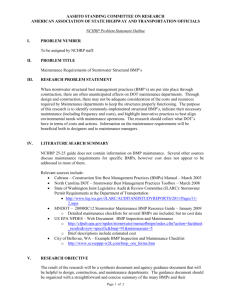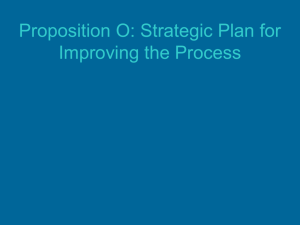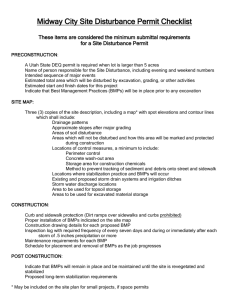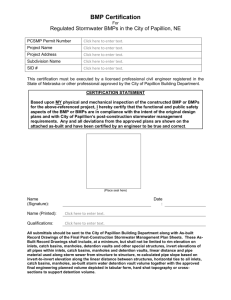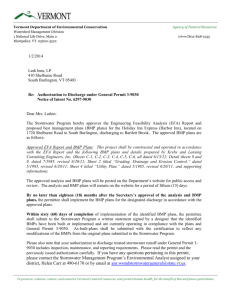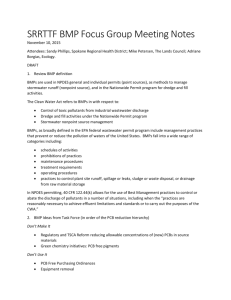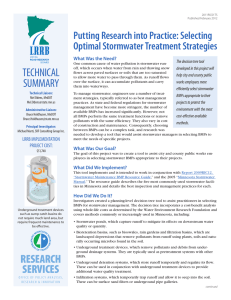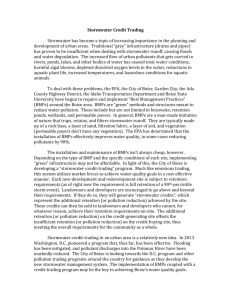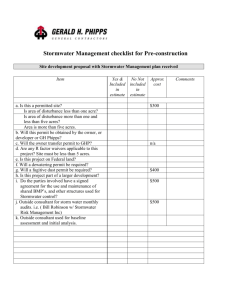Best Management Practices Working Session Draft 12.09.15
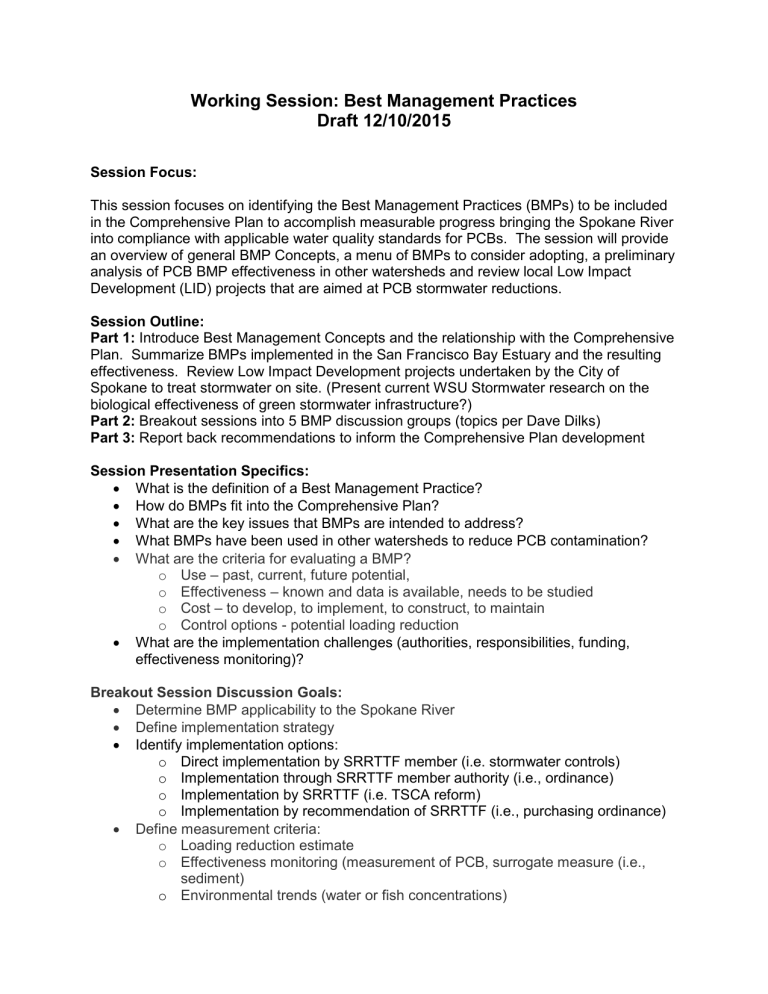
Working Session: Best Management Practices
Draft 12/10/2015
Session Focus:
This session focuses on identifying the Best Management Practices (BMPs) to be included in the Comprehensive Plan to accomplish measurable progress bringing the Spokane River into compliance with applicable water quality standards for PCBs. The session will provide an overview of general BMP Concepts, a menu of BMPs to consider adopting, a preliminary analysis of PCB BMP effectiveness in other watersheds and review local Low Impact
Development (LID) projects that are aimed at PCB stormwater reductions.
Session Outline:
Part 1: Introduce Best Management Concepts and the relationship with the Comprehensive
Plan. Summarize BMPs implemented in the San Francisco Bay Estuary and the resulting effectiveness. Review Low Impact Development projects undertaken by the City of
Spokane to treat stormwater on site. (Present current WSU Stormwater research on the biological effectiveness of green stormwater infrastructure?)
Part 2: Breakout sessions into 5 BMP discussion groups (topics per Dave Dilks)
Part 3: Report back recommendations to inform the Comprehensive Plan development
Session Presentation Specifics:
What is the definition of a Best Management Practice?
How do BMPs fit into the Comprehensive Plan?
What are the key issues that BMPs are intended to address?
What BMPs have been used in other watersheds to reduce PCB contamination?
What are the criteria for evaluating a BMP? o Use
– past, current, future potential, o Effectiveness – known and data is available, needs to be studied o Cost – to develop, to implement, to construct, to maintain o Control options - potential loading reduction
What are the implementation challenges (authorities, responsibilities, funding, effectiveness monitoring)?
Breakout Session Discussion Goals:
Determine BMP applicability to the Spokane River
Define implementation strategy
Identify implementation options: o Direct implementation by SRRTTF member (i.e. stormwater controls) o Implementation through SRRTTF member authority (i.e., ordinance) o Implementation by SRRTTF (i.e. TSCA reform) o Implementation by recommendation of SRRTTF (i.e., purchasing ordinance)
Define measurement criteria: o Loading reduction estimate o Effectiveness monitoring (measurement of PCB, surrogate measure (i.e., sediment) o Environmental trends (water or fish concentrations)

